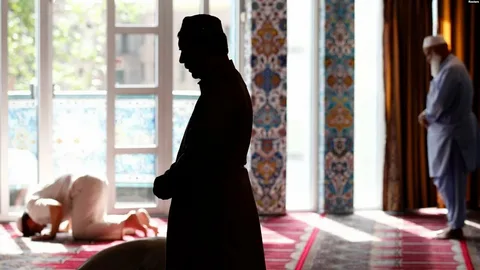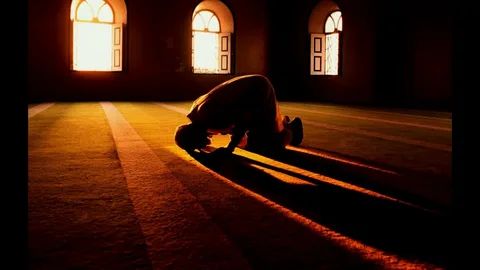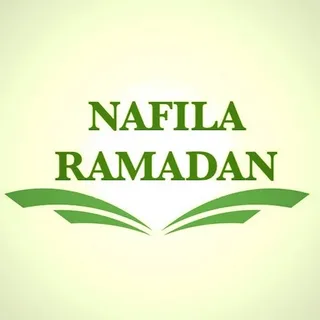Ramadan, the holy month for Muslims, is a time of spiritual reflection, fasting, and increased devotion. One of the most revered acts of worship during Ramadan is the Nafila prayer, a voluntary prayer performed in addition to the obligatory prayers. But what exactly is the Nafila Ramadan prayer, and why is it so important? In this article, we will explore the significance of Nafila Ramadan Prayer, its benefits, how to perform it, and its deep connection to spiritual growth.
What is Nafila Prayer?

Nafila prayer, often referred to as “Sunnah” prayer, is a non-obligatory prayer that enhances one’s connection with Allah. It is performed voluntarily, but it carries immense reward, especially during the blessed month of Ramadan. Unlike the obligatory five daily prayers (Salah), Nafila prayers are extra prayers that a Muslim can offer for additional blessings.
The Importance of Nafila Prayer in Ramadan
Nafila prayers, also known as voluntary or supererogatory prayers, hold great importance in Ramadan, complementing the obligatory prayers (fard) and offering numerous spiritual benefits. Here are some reasons why Nafila prayers are important during Ramadan:
Drawing Closer to Allah
Ramadan is a time for Muslims to seek closeness to Allah through worship and devotion. While fasting and reciting the Qur’an are central to Ramadan, Nafila prayers hold significant importance. These prayers are seen as a way to seek Allah’s mercy, forgiveness, and blessings during this sacred month.
Enhancing the Benefits of Fasting
The reward for Nafila prayers in Ramadan is unparalleled. Not only does it magnify the rewards of fasting, but it also brings about a sense of peace and tranquility. When performed consistently, these prayers help individuals grow spiritually, and their faith deepens.
Types of Nafila Prayers

ramadan prayer guide are voluntary prayers that are performed in addition to the obligatory (fard) prayers. There are several types of Nafila prayers that a Muslim can offer, and they vary in terms of time, purpose, and reward. Here are the main types:
1. Taraweeh Prayer
Tarawih prayer is a special Nafila prayer offered after the ‘Isha prayer during Ramadan. It is one of the most well-known Nafila prayers performed during this month, often in congregation at the mosque. Taraweeh consists of long recitations of the Qur’an, and its performance is highly encouraged.
2. Tahajjud Prayer
Tahajjud prayer is a prayer offered during the night, usually after midnight. It is considered one of the most spiritually uplifting Nafila prayers. Many people choose to perform Tahajjud during the last ten days of Ramadan to seek the Night of Decree (Laylat al-Qadr), a night filled with blessings and mercy from Allah.
3. Duha Prayer
The Duha prayer is a morning prayer that can be performed at any time after the sun has fully risen until just before the time for Dhuhr prayer. It is a simple Nafila prayer, but it holds great reward for those who perform it regularly.
The Benefits of Nafila Prayer in Ramadan
Nafila prayers in Ramadan carry immense spiritual benefits and offer numerous rewards, which can help a person draw closer to Allah. Some of the key benefits of Nafila prayers during Ramadan include:
- Spiritual Cleansing and Forgiveness: Nafila prayers help cleanse the heart and soul. By performing additional acts of worship, a Muslim’s heart becomes purified, and they are granted forgiveness for their shortcomings. The extra prayers are seen as a means of atoning for mistakes and shortcomings.
- A Source of Strength During Fasting: While fasting can be physically challenging, especially in long hours of heat, Nafila prayers provide spiritual strength and mental focus. They allow a person to seek divine assistance and feel spiritually recharged.
- Reward Beyond the Norm: According to many Hadiths, the reward for Nafila prayers in Ramadan is amplified significantly. In fact, they are considered as a means to increase one’s chances of receiving mercy and forgiveness from Allah.
How to Perform Nafila Prayer
Performing Nafila prayers (voluntary prayers) is quite similar to the obligatory (fard) prayers, but the key difference is that Nafila prayers are not mandatory and can be prayed at any time, with some exceptions. Here’s how to perform Nafila prayers:
1. Intention (Niyyah)
Like all acts of worship in Islam, the performance of Nafila prayer begins with an intention (niyyah). Before starting, it is essential to have a sincere intention to offer the prayer as an act of worship to please Allah.
2. Number of Rakat
Nafila prayers can be offered in various forms, with different numbers of rakats (units of prayer). For instance, Taraweeh prayer is often prayed in sets of two rakats, while Tahajjud can be offered in any number of rakats, typically two by two.
3. Quiet and Focused Prayer
Just as with any prayer, Nafila prayers require focus and sincerity. The worshiper should be mindful of their actions and avoid distractions. Offering Nafila prayers in a quiet environment fosters a sense of calmness and connection with Allah.
Nafila Prayer for the Laylat al-Qadr
Laylat al-Qadr, the Night of Decree, occurs during the last ten days of Ramadan, with the 27th night being the most widely observed. This night holds great importance in Islam, as it is said to be the night when the Qur’an was revealed. Offering Nafila prayers during this night brings immense reward, and it is a time when Muslims make extra efforts to seek Allah’s mercy.
During Laylat al-Qadr, Muslims often perform additional prayers such as Tahajjud and the recitation of the Qur’an. The night is spent in worship, prayer, and reflection, seeking forgiveness and blessings from Allah.
Nafila Prayer and Its Role in Personal Growth
Offering Nafila prayers consistently nurtures an individual’s spirituality. Ramadan is an opportunity to develop a deeper connection with Allah, and these extra prayers are key to this process. Nafila prayers help individuals build a strong habit of worship that extends beyond Ramadan. By performing these prayers regularly, a person strengthens their bond with Allah and continues to reap the benefits of voluntary worship throughout the year.
FAQs
[sc_fs_multi_faq headline-0=”h2″ question-0=”What is the difference between Nafila and Sunnah prayers?” answer-0=”Nafila and Sunnah prayers are both voluntary prayers, but Sunnah prayers are specifically linked to the regular prayers (Salah) and are taught by the Prophet Muhammad (PBUH). Nafila prayers are additional voluntary prayers offered at any time for extra blessings.” image-0=”” headline-1=”h2″ question-1=”How many rakats are in the Taraweeh prayer?” answer-1=”Taraweeh consists of 20 rakats, although it can be performed in smaller sets of 2 rakats.” image-1=”” headline-2=”h2″ question-2=”Can Nafila prayers be performed at any time during Ramadan?” answer-2=”Yes, Nafila prayers can be offered at any time during Ramadan, with special emphasis on night prayers such as Tahajjud and Laylat al-Qadr.” image-2=”” headline-3=”h2″ question-3=”Can Nafila prayers be performed alone or must they be in congregation?” answer-3=”Nafila prayers can be performed both alone and in congregation, with the reward being greater when performed in a congregation, especially for Taraweeh.” image-3=”” headline-4=”h2″ question-4=”Is it necessary to perform Nafila prayers every night in Ramadan?” answer-4=”While it is not obligatory to perform Nafila prayers every night, it is highly encouraged to do so as it brings immense rewards, especially during the last ten days of Ramadan.” image-4=”” count=”5″ html=”true” css_class=””]
Conclusion
In conclusion, Nafila prayers during Ramadan are a powerful tool for spiritual growth and closeness to Allah. They offer immense rewards and blessings, especially when performed with sincerity and consistency. While Taraweeh, Tahajjud, and Duha are among the most popular Nafila prayers during Ramadan, the act of performing voluntary prayers throughout the month holds great significance in Islam.
Nafila prayers are not just about seeking forgiveness and rewards; they also cultivate a deeper connection to Allah, allowing the Muslim to grow spiritually and emotionally. During Ramadan, these prayers help maintain focus on the purpose of the fast, bringing peace to the soul and strength to the heart.


